What is it about daily newspapers? Falling circulations and advertising have broken business models that cannot be mended even by booming digital audiences. But you wouldn’t guess it. Perhaps one-time power, prestige and profitability somehow persuades them that one more marketing tweak or a revamped web site is going to restore their fortunes. Many still cannot quite understand why so much of the booming millennial audience is going elsewhere for its news. They think young audiences have got it wrong, but try telling that to BuzzFeed, Mic, Vox, Quartz, or Vice. And daily newspapers keep searching for the future in ways that their own financial journalists would identify as feeble business strategy.
It starts with the seemingly reassuring 100-year-old Riepl’s Law which states that media progress is cumulative and that, while new media is constantly added, the old ones remain. It continues through facile claims that “only newspapers” can produce high-quality investigative journalism. Then there are the mostly ho-hum web sites and digital editions masquerading as strategy.
Complacent news brands
Many daily newspapers actually seem to be sleepwalking to their graves. They inhabit a world with the belief that – soon enough – the disruption will subside and these famous news brands will be back where they belong, give or take some more cost savings and a bit of investment in technology. Fellow dreamers include other traditionalists, the politicians and network broadcasters who still regard the real news as something that happens in print. But it won’t last.
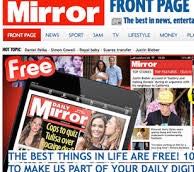
The falling profits and prestige of newspapers will keep discouraging proprietors, give or take the odd Jeff Bezos or Warren Buffett who are not scared off by the mayhem.
Although daily newspapers are shrinking, they still suffer the complacent tendency to over-rate the value of the brands and content that have served them so well in the past. But technology has changed not only the world in which they compete but also the appetites of their customers. It’s not just digital natives who are losing interest in traditional print-centred journalism.
Newspapers have been remarkably stubborn in seeking to optimize the existing business – and adapting only by producing the same kind of content in a different format. Few have re-thought the content, style and delivery, let alone the business plan.
It is time for them to recognise the generational shift in news media, which I would summarise as:
News 1.0: Pre-internet producer-scheduled supply of news in print and broadcast. Consumer passive. News 2.0: Interactive, on-demand and multi-platform news. Consumer active. News 3.0: Platform-neutral digital fusion of reading, audio, video and social media including aggregation of multi-source content. Consumer control.
While News 3.0 is embryonic, many traditional news organisations are still firmly rooted in the starting blocks of News 1.0.
News 3.0 will be the online fusion of news providers, whether from newspapers, digital or broadcast. It will be dominated by video.
While quality daily newspapers will continue to seek subscription revenues for their online services, most news providers will ultimately depend on revenues from advertising, sponsorship and e-commerce including music, movies, games, and reading. Data-tracked large-scale web audiences will (mostly) be more valuable than getting readers to pay.
The most successful of these News 3.0 portals will be able to dominate the provision of news and entertainment to their chosen audiences, beyond even what was possible in the golden days when most readers were totally dependent on a single daily newspaper, radio or TV channel. And, in an echo of the past, we should expect rejuvenated traditional news brands to exploit the accessibility, cost-effectiveness and power of print by publishing (mostly free) newspapers and magazines. Same medium, different model – which is what Riepl meant.
News 3.0 creates the opportunity primarily for three broad categories of news service:
- Global across a spectrum that spans: The Guardian, Huffington Post, New York Times, Time magazine, and Washington Post; Daily Mail, CNN, Al-Jazeera, Sky News, BBC, Vice News, and BuzzFeed; and vertical specialists like Bloomberg, Financial Times, Wall Street Journal, Business Insider, CNBC, and ESPN. Many of these services will have regional or national variations, in order to maximise e-commerce and advertising revenues.
- National including many of the existing news providers across print, broadcast or digital. Some providers might be expected to offer internet services like email and cyber security in order to encourage user loyalty. Some major consumer businesses like banks, and retailers may sponsor news-entertainment portals – or even seek to operate them as an adjunct to their principal activities.
-

Swiss local paper + multimedia business Hyper-local like the services being operated currently by Gossweiler in the Swiss Alps and STV in Scotland. These might increasingly become e-commerce portals and, perhaps, even instruments of local democracy for voting and/or lobbying. Radio has always been a big part of local media and the expansion of online radio and podcasting by US local papers shows how audio will develop.
That’s the good news for newspapers: a roadmap for digital profitability. But almost everything must change in order to get there.
‘Do the best, link to the rest’
First, newspaper-centric companies need to embrace aggregation and become curators of multi-source content. But that requires a huge change in mind-set – and skills.
Jeff Jarvis, a professor of the City University of New York, sums it up: “Do what you do best and link to the rest.” He calls on news groups to specialise: “There’s little sense wasting your time writing the 25th-best account of a story when it will appear on the third page of a search request and in only a few tweets; mediocrity and repetition don’t pay anymore, at least not for long. But there is considerable value in creating the best, for others will end up linking to you.”
Jarvis’ words might horrify some journalistic traditionalists but that is the point. Newspapers need to benchmark themselves against social media like Facebook and Snapchat (and perhaps also online TV) rather than other newspapers. The digital media world is about page views, which pull in advertising. So news groups need to compete for page views — and also, crucially, ensure that their costs are low enough to make up for much-lower-than-accustomed advertising rates.
Content aggregation can rock the economics of newspapers which – 14 years after iTunes first gave music lovers the option of downloading a single track instead of the whole CD – have stubbornly refused to unbundle online content. And, after years of free online news, they are still reluctant to admit that much of it is now relatively low-value. After all, it was once the reason people bought daily newspapers.
Second, news groups have to become masters of video. Even now, the audience scores and advertising revenues of online video show that this is the medium of choice for an increasing number of consumers – and it will keep growing.

Third, they must learn to become good business partners. Daily newspapers are packed with out-spoken, independent-minded journalists and editors who are used to being the kings and queens of their world. But now they need to build partnerships, alliances and even joint ventures with online companies as diverse as social networks, retailers, entertainment providers – and other media groups.
At a time when news companies themselves need to specialise, the News 3.0 portals, ironically, will depend on satisfying an increasing range of consumer needs. That requires a dramatic change of attitude – and, inevitably, will have an additional impact on content. They will need to accommodate a blurring in the distinction between editorial and advertising – which has been coming. And the traditional stridency of tabloid newspapers, for example, will become more problematic in a digital world funded by advertising. Readers might like racy tabloids but they won’t be paying.
Fourth, these traditional news groups must become tech companies and acclimatise to a world where print will still exist but will be way behind digital. They could do worse than study Bloomberg, a decidedly tech and data business which also makes good use of print – and which might hope to demonstrate this further by – one day – acquiring the Financial Times.
Social media is key
The still rising success of Facebook, Twitter, LinkedIn, Instagram, Google, and SnapChat – as news and information providers – demands the attention of news groups. Almost all social platforms are seeking to become publishers or have already done so, whether it’s by hiring writers and editors or by encouraging media companies to
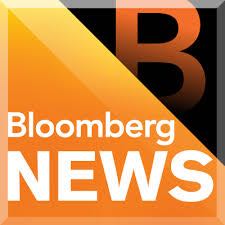
allow their content to live on their platforms. These social and business networks increasingly dominate online activity – especially among the young audiences that news groups most need to re-engage.
The scale of the challenge is spelled out by Facebook whose 1.4bn users mean it has replaced Google as publishers’ most important traffic source. Chris Cox, head of Facebook’s News Feed, told the Code/Media conference in California last month that his team is talking to publishers about hosting their content directly on Facebook, which (he said) could provide a better “container” for information.
The soft solicitation disguises a big stick warning for traditional media which has been accustomed not just to owning its content but also the branded platforms which carried it. That’s what makes social media look a lot more like a competitor for media companies than a partner — and a competitor that is doing better at the advertising that traditional media once ‘owned’.
‘Own brand’ news
The point is that the news will only ever be a small part of social media content: it simply enhances their ability to reach huge numbers of target users. So, they will not be paying handsomely (if at all) for what publishers still regard as their crown jewels.
Food manufacturers will recognise this as the challenge they themselves first faced decades ago, when supermarkets started selling cut-price “own brand” or “private label” products to compete with long-established brands. Then, as now, some of the world’s largest food firms refused to produce “own brand” products, while still needing to compete for supermarket shelf-space.
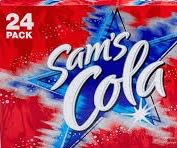
Mighty companies like Nestle, Unilever, Coca Cola and General Foods have been engaged in a tough fight on behalf of the household brands which deliver their profits. Indeed, many manufacturers have had to make “own brand” products as the proportion of such sales has soared in supermarkets (more than 50% in the UK, for example).
Is the same “own brand” power-play already starting to affect publishers in their dealings with Facebook?
Those relationships will become even more challenging if retailers and other traditional media advertisers seek to extend their content marketing activity into news-entertainment portals. Suddenly, news groups could face the need either to co-operate with another group of powerful, new gatekeepers – or to go it alone and face even more formidable competition for audiences and advertising.
Arguably, magazine publishers face similar challenges and some might partner still-powerful newspaper brands to launch News 3.0 portals. But that would only be the start. Most daily newspapers still have to make major changes to almost everything they do. There are no easy options in the fight for a digital future.
Jeff Bezos’s 4 lessons for daily newspapers
Is this little Swiss company the future of local media?


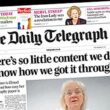
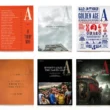

I agree almost all of the above… and in respect of my own business have tried to identify a way through the issues which were first starting to become clear back in 2002/4.
In respect of *the papers* I think your analysis is spot on..another way of saying I agree with it in virtually every respect.
The only place I part company is in the area of *link to it*…at present *link to it*, which is in effect use it, is both a subservient approach, and a very domineering one.
At the end of the day *link to it* works at present because content creators are often grossly exploited in terms of fees that can be charged for content, because of the *link to it* issue.
The problem affects newspapers as well as agencies like mine.
How exclusive is an exclusive when it can linked to in an instant? Or how can an agency like mine create the money to pay for the salaries of trained people if everything we do is linked to, rather than bought?
I suppose the argument could be that if agencies are to be the casualties of the new era because the new realities of the disintermediated world demand it..then so be it.
But while much of news coverage seems to be just a question of tracking down a link to some stunning footage of a plane hitting a taxi on it’s way to the river bed, or a weirdly coloured dress, Madonna falling down stairs, and so forth…. there are also courts that need to be covered by people who know what they are doing, or fraudsters posting things on the net to be exposed, as well as linked to… and so on.
This isn’t entirely a post of special pleading in that from a business dependent on newspapers (including broadcasters) for over 90% of revenue we’ve got to a position where it is around 50% and falling… but it would be sad to think that one day it will have to inevitably fall to zero.